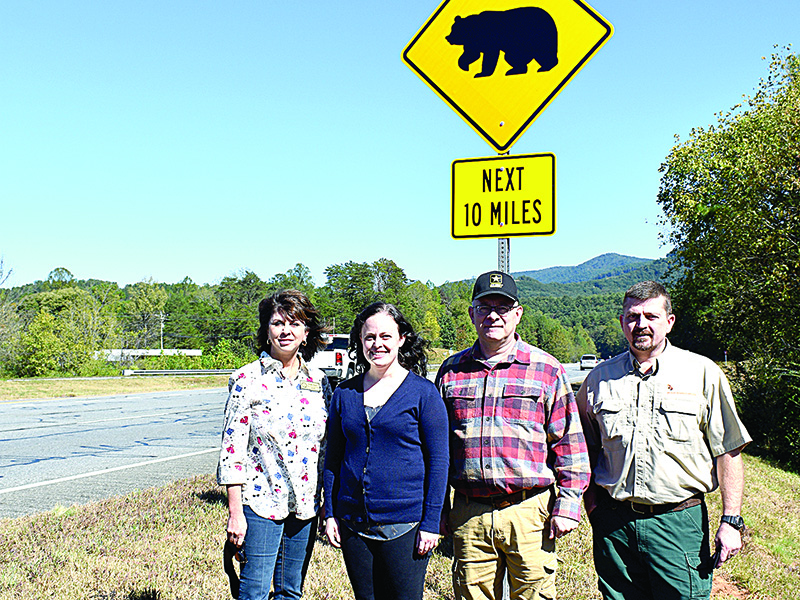Last week we concluded by asking the questions, “How often does black bear roadkill take place and does it matter anyway?”
To identify the scope of the problem, we initially screened the data provided by Georgia Department of Natural Resources (GDNR) and looked at north Georgia counties to identify trends. It immediately became evident Gilmer County had both the highest roadkills and legal harvests for the state.
Gilmer County experienced 207 black bears killed from 2013-2018; 181 legally, two illegally, and 24 roadkills. These 207 represent 10.45 percent of all killed in North Georgia, during this period. We also looked at black bear roadkill from 2008 through 2018 for North Georgia. A staggering 64 percent occurred on GA. Hwy. 515 between Ellijay and Blue Ridge. GA Hwy. 515 was an issue.
In the past 18 months, we have personally seen and reported black bear roadkill and knew there was an issue, so we wanted to check other agencies and the public to confirm or deny our hypothesis. Reporting, whether it is military, nongovernmental organizations (NGO’s), local, state, federal agencies or private sector, is an issue in and of itself.
We asked the Gilmer County Sheriff’s Department (GCSD) and made an appeal on social media for the public’s help. We asked for data from GCSD for 2014-2018. We received data from the public for 2015-2019. The response by both was fantastic. Of the 17 black bear roadkill reported by the public and those added by the GCSD, only two were double reported. This doubled the number that had been killed on GA Hwy. 515 for a total of 64 black bear roadkill. We know the number is even higher, because it is evident that many are taken and not reported. We asked for the Georgia Department of Transportation’s (GDOT) assistance. The signs were in the ground in 53 days.
Why does this matter? GDNR manages and monitors the black bear population. The Appalachia Georgia Friends of the Bears sees them more individually. We do not want them to have died in vain. It is important to report roadkill, so an attempt can be made to collect data to better inform GDNR. On two occasions, we went out, collected and reported the data to GDNR. This data enhances accurate tracking and better management of the population.
The Appalachia Georgia Friends of the Bears’ mission is to reduce human/bear conflict through proactive educational outreach programs, increase public awareness about coexisting with black bears, the use of humane bear deterrents and advocacy.
Given that this stretch of road has the highest black bear roadkill in the state of Georgia, we believe it was prudent for GDOT to emplace “Bear Crossing” signs at the appropriate locations to make drivers aware of the presence of black bears.
We want to profusely thank Adam Hammond, chief bear biologist for GDNR, Sgt. Laney, GCSD, Emily Dunn, GDOT board member, 9th Congressional District, and Christina Barry, PE, District 6 traffic engineer for their assistance on making this happen.
By Gerald Hodge, Founder, Appalachia Georgia Friends of the Bear

